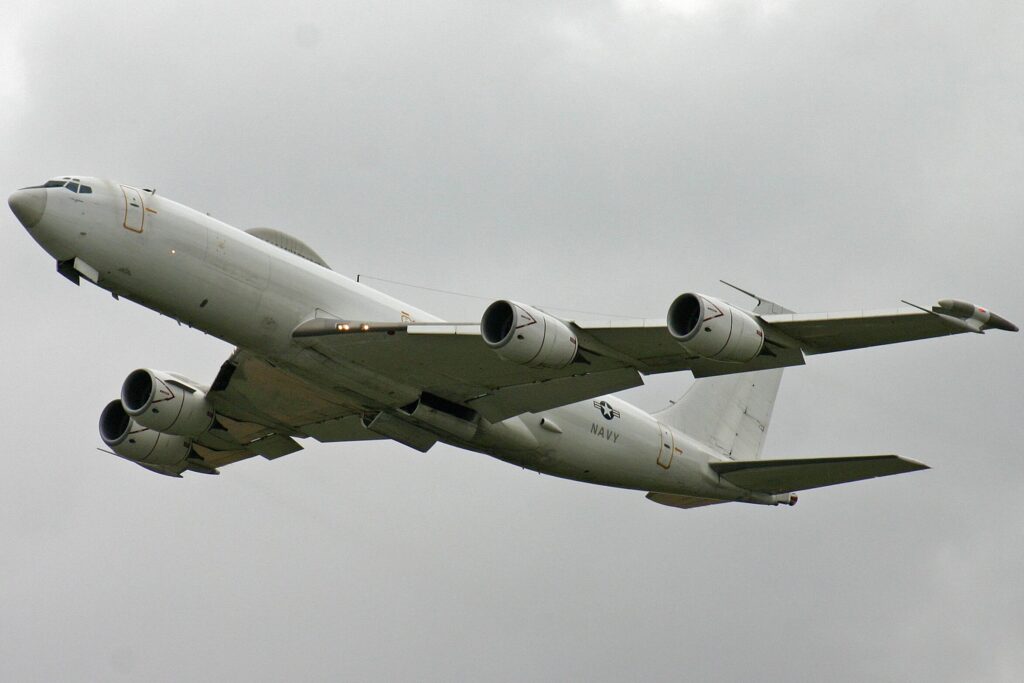On the morning of October 2, 2020, the President of the United States Donald Trump announced he tested positive for coronavirus COVID-19, along with the First Lady Melania Trump. Two U.S. Navy E-6B Mercury aircraft, colloquially known as the “Doomsday planes”, were already in the skies. The timing of the flights, however, was “purely coincidental”, according to the U.S. military.
The E-6B fleet, composed of 16 aircraft, is operated by Fleet Air Reconnaissance Squadron 3 (VQ-3), VQ-4, and VQ-7 of the U.S. Navy. Most of it is based at Tinker Air Force Base, Oklahoma, which has the particularity to be halfway from both the Pacific and the Atlantic Oceans. And this is where one E-6B took off from, shortly before Donald Trump announced testing positive to COVID-19. A second one took off from the west coast, probably from Travis Air Force Base in California.
Donald Trump was most likely exposed to the virus onboard Air Force One through his aide Hope Hicks, who flew with him to participate in the debate against Joe Biden on September 29, 2020. The Counselor to the President had tested positive hours before Trump’s positive results were made public.
The two concurring events raised concerns on social media. However, the timing of the flights was “purely coincidental,” as a U.S. Strategic Command spokesman told Fox News. With such a critical mission, at least one E-6B Mercury aircraft is flown on a near-daily basis to ensure maximum preparedness. Most of the time, the “Doomsday plane” flies with its transponder on, making it easily trackable on any open flight data platform.
The United States Navy’s “Doomsday plane”
Like the E-3 Sentry, the E-6B Mercury is based on the Boeing’s 707-320 airliner. Its purpose is to carry out the “Take Charge And Move Out” (TACAMO) mission, which means ensuring the communication relay between on one side the Pentagon, the White House, the U.S. Navy bases, and on the other side the Ohio submarines in charge of carrying out the first nuclear strikes with their submarine-launched ballistic missiles (SLBM), in the event of a thermonuclear conflict outbreak. Submarines are part of the United States’ nuclear-deterrent triad, along with strategic bombers and intercontinental ballistic missiles.
With such a role, the Boeing E-6B Mercury is designed to survive the electromagnetic pulse of a nuclear explosion. Its communication system includes a double encrypted communications system Very Low Frequency and Very Very Low Frequency (VLF/VVLF) system that allows talking with immersed submarines within a radius of 150 to 200 kilometers (95 to 125 miles).
Thanks to the support of tankers for aerial refueling, it can stay in the sky for up to 29 flight hours. In many regards, the E-6B Mercury is the Navy equivalent of the E-4A Nightwatch, the National Operations Airborne Center of the United States Air Force (USAF).
Update: The article was modified to make clear that the flights were in no way exceptional.

